#inuit history
Text
Amazing fanart by Joanacchi! Posted here on tumblr with their blessing. Each one is based on a style that reflects a particular ancient culture's art history. (See below for descriptions provided by the artist!)
Store (buy these prints!) Twitter Instagram

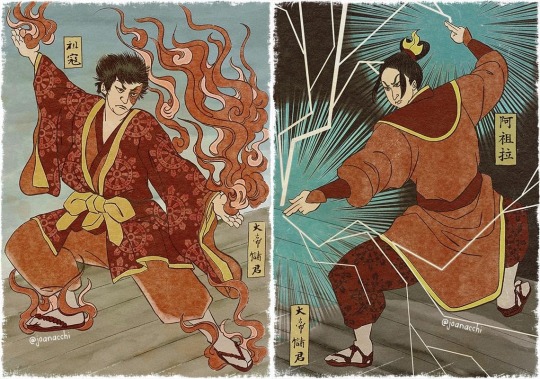
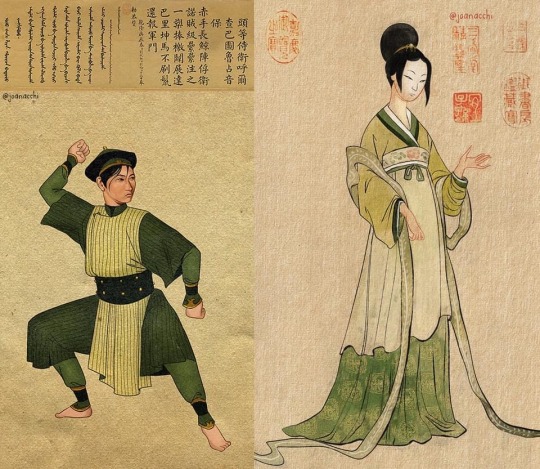
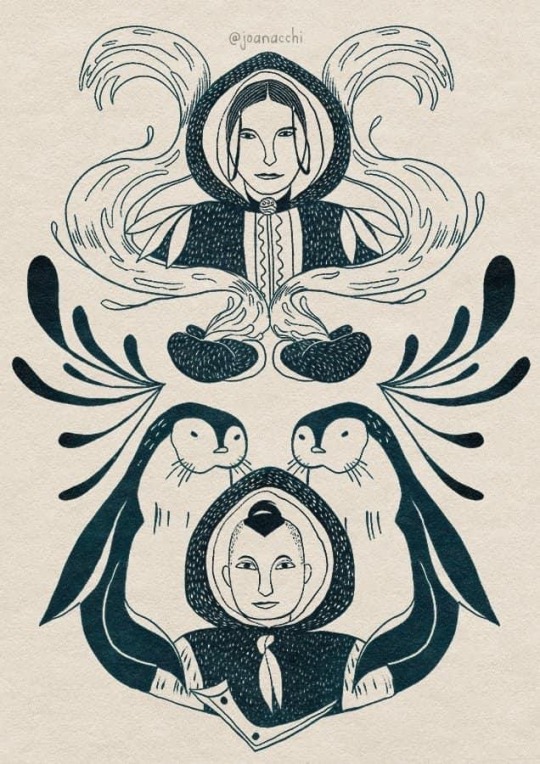
Aang: Tibetan Thangka
"Thangkas are traditional Tibetan tapestries that have been used for religious and educational purposes since ancient times! The techniques applied can vary greatly, but they usually use silk or cotton fabrics to paint or embroider on. What you can depict in a Thangka is really versatile, and I wanted to represent things that make up Aang as a character."
Zuko and Azula: Japanese Ukiyo-e
"Ukiyo-e is a style that has been around Japan between the 17th and 19th century, and focused mainly in representing daily life, theater(kabuki), natural landscapes, and sometimes historical characters or legends!
Ukiyo-e was developed to be more of a fast and commercial type of art, so many drawings we see are actually woodblock prints, so the artist could do many copies of the same art!
I based my Zuko and Azula pieces on the work of Utagawa Kuniyoshi (1798-1861) one of the last ukiyo-e masters in Japan! He has a specific piece which featured a fire demon fighting a lord that fought back with lighting, and that really matched Zuko and Azula's main techniques!”
Toph: Chinese Portraiture from Ming and Qing Dynasties
"Ming Dynasty (1368-1644) was one of the longest in China! It was also a period where lots of artistic evolutions were happening, especially when it comes to use of colour! There was not a predilection for portraits during this time, but there are a lot of pieces depicting idealized women and goddesses from the standards of the time. For this portrait of Toph, I imagined something that maybe their parents commissioned, depicting a soft and delicate Toph which we know is not what she is about ♥️
Qing Dynasty (1644-1912) was the last Chinese Dynasty to reign before the Revolution. One of the most famous emperors of this period was Qianlong, and he really liked Western art! He commissioned a lot of portraits of his subordinates, and I chose a portrait of one of his bodyguards as a reference for the second Toph portrait, which I believe is much more like how she would want to be represented! The poem on top talks about the bodyguards' achievements during a specific war. I had no time to come up with a poem for Toph, so I just used the same one for the composition!”
Sokka and Katara: Inuit Lithograph
"For a long time, Inuit art expressed itself in utilitarian ways. The Nomadic lifestyle of early Inuit tribes played a huge part in that: most art pieces are carved in useful tools, clothing, or children's toys, small and easy to be transported, and depicted scenes and patterns representing their daily lives!
That changed a lot during the colonization. Since the settling of the Inuit tribes, many art pieces began to be created in order to be exported to foreigns, so they started to sculpt bigger and more decorative pieces.
Lithography, which is a type of printmaking, was introduced to Inuit people by James Houston, that learned the technique from the japanese. The art form was quickly embraced by the inuit, as part of the process is very similar to carving. Prints that are produced by inuit artists are still being sold today!
As lithography is not an old art style and it's still commercially relevant to the Inuit communities, since creating these in 2021 I have been donating regularly to the Inuit Art Foundation, not only all the money I get from selling some prints of these but a bit more, at least once a year. Hopefully, I can increase donations this year!”
663 notes
·
View notes
Text
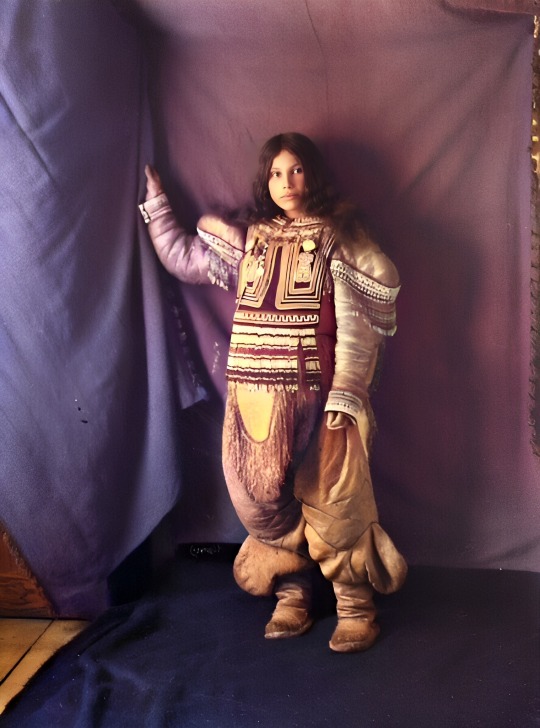


Portraits of Koo-tuck-tuck, an inuk woman by Geraldine Moodie, c. 1900s. Koo-tuck-tuck was deaf and dumb. The baby in the first picture was her son.
[colors by me]
91 notes
·
View notes
Photo

Day 12 - Taqulittuq!
Taqulittuq was an Inuk woman born in what is now Nuvutiq, on the far Northern coast of Canada. Her family were travelers and guides, and Taqulittuq learned English from whalers at a young age. Her brother had accompanied an explorer to Scotland - nearly dying of pneumonia in the process - and Taqulittuq and her husband were coerced into show business by an entrepreneuring whaler who wanted to make his fortune exhibiting them. Taqulittuq dined with Queen Victoria and - unlike many in her position - eventually returned home.
In 1860 she and her husband, Ipirvik, were hired as guides by an eccentric American explorer, Charles Francis Hall, who was hunting for the lost Franklin expedition. When Hall went back to the United States, the pair - appearing in his records as “Joe and Hannah” - came with him, where Taqulittuq was once more on exhibition but also seems to have been one of the few people who genuinely counted Hall as a friend. Nevertheless, her young son’s death in the United States devastated her; when she and Ipirvik returned North with Hall, they adopted a daughter, Panik.
In 1871, she, Ipervik, and Panik accompanied Hall aboard the ship Polaris on his third expedition. This one was a disaster; Hall died mysteriously soon into the voyage, and Taqulittuq and Ipervik, being about the only people on the ship who liked him, were also the only ones to insist his death had been murder. The situation worsened when nineteen of the expedition, Taqulittuq and her family among them, were stranded on an ice flow and spent six months drifting south.
Ipervik continued work as a guide, but this was, understandably, Taqulittuq’s last expedition. She settled in Connecticut, where she worked as a seamstress during her husband’s absences. Sadly, Panik died young in 1876, and Taqulittuq soon after.
#taqulittuq#history#inuit history#canadian history#american history#polaris expedition#awesome ladies of history#october 2022#my art#racism Tw
12 notes
·
View notes
Text

“ESKIMOS ARE NOT PRIMITIVE PEOPLE,” Montreal Gazette. November 30, 1932. Page 5.
----
Richard Finnie Describes Delights of Arctic Scenery
----
Toronto, November 29. "Eskimos are not refrigerated, blubber-saturated savages, but happy, intelligent, and hospitable people, the finest, most generous and most likeable people of all uncultured races," according to Richard Finnie, of Ottawa, who accompanied L. T. Burwash on his Franklin expedition to King William Island.
"The Arctic climate," Mr. Finnie said in an address here last night, :is by no means unbearable. The summers are short, but warm and pleasant. The winters are cold, but I have suffered far more with cold in civilization, wearing its ridiculously inadequate clothing.
"The tourist has begun to discover the Mackenzie River," Mr. Finnie said. "There are 2,000 miles of magnificent waterway through absolutely unspoiled country, to be travelled in comfort by aeroplane, steamboat or canoe.
"The aeroplane has changed the whole situation in the Arctic. It is possible that across the fringe of the polar ocean, towns and cities may grow up in the course of the next four generation's, the nucleus of a new empire."
Mr. Finnie is official archivist and photographer of the Canadian Arctic under the Department or Interior, Ottawa, and is a son of O. S. Finnie, former director of the Canadian Northwest Territories branch.
[AL: Weirdly positive account of Inuit society and culture, despite the racist and archaic name. Still, what a vision of settler colonialism - Vacationland forever.]
#toronto#inuit#inuit history#inuit culture#settler colonialism in canada#settler colonialism#noble savage stereotype#far north#mackenzie river#canadian arctic#great depression in canada#indigenous people
4 notes
·
View notes
Text


Little girl using ulu & Mama drying fish
Alaska
The World of the American Indian, National Geographic, 1974
2K notes
·
View notes
Text
Beloved Nunavut elder Qapik Attagutsiak died at the age of 103 last week.
Born on June 11, 1920 in Nunavut's Kivalliq region, Attagutsiak was a traditional midwife who worked tirelessly for better healthcare for Inuit. She was also an expert seamstress and a decorated elder, awarded the Queen Elizabeth II Diamond Jubilee Medal.
Her family announced that she died peacefully and surrounded by family in Ottawa on Dec. 14.
Clare Kines, who has lived in Arctic Bay for the last 24 years — where Attagutsiak spent her later years — remembered her as warm and loving.
"She was that sort of person. She always struck me as being genuinely happy," Kines said. [...]
Continue Reading.
Tagging: @politicsofcanada
222 notes
·
View notes
Photo



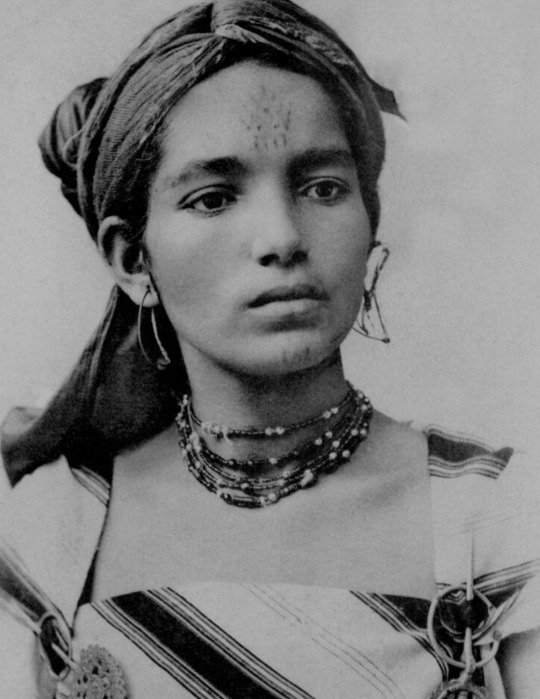
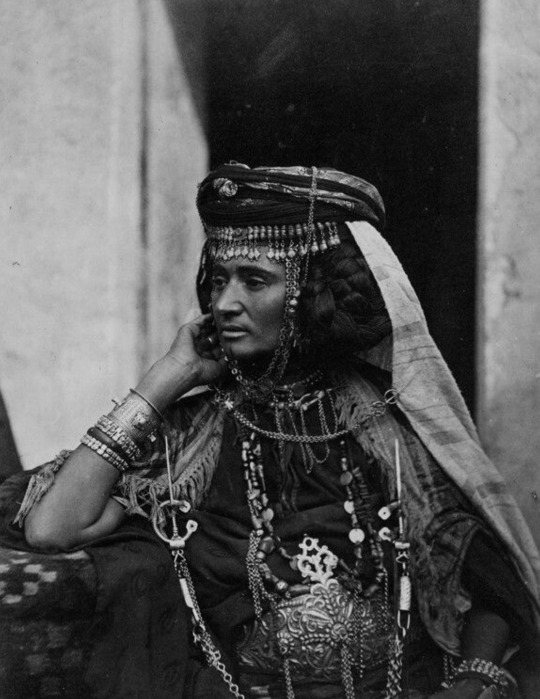

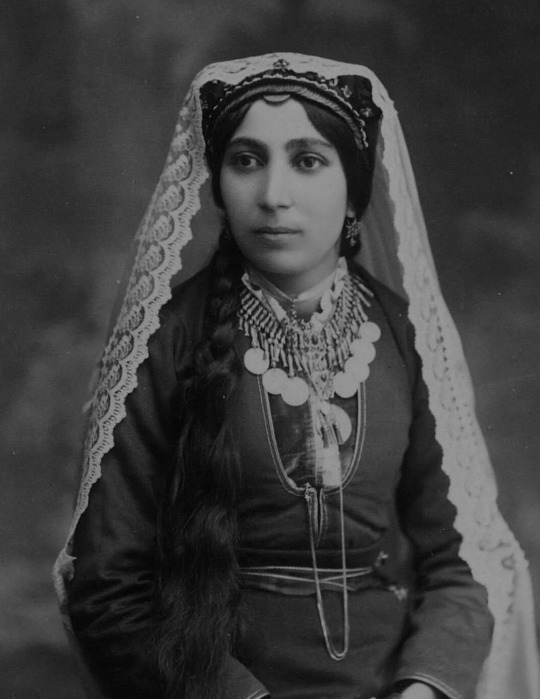
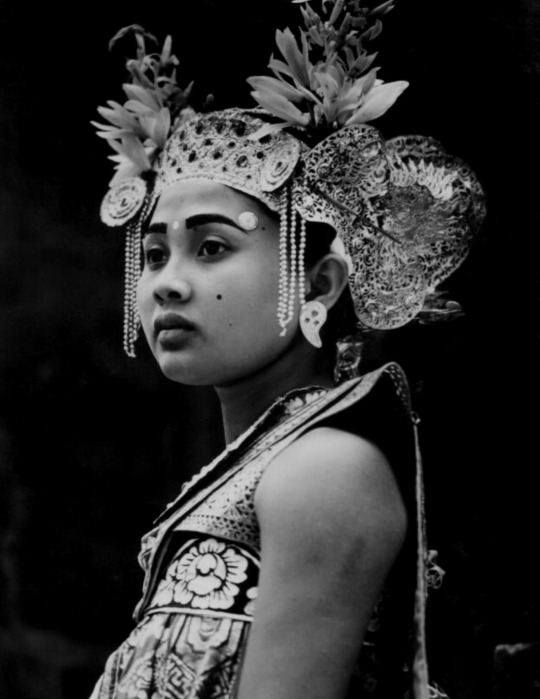
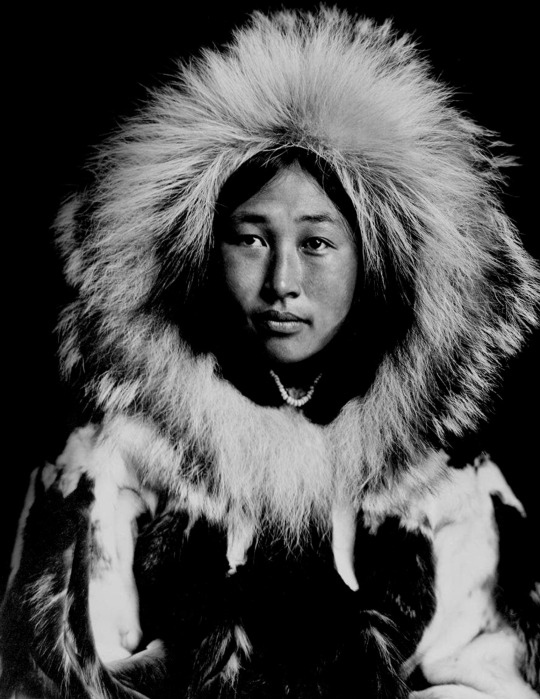

beauty around the world
#vintage#ph#photography#women in history#inuit#japanese#african american#armenian#south african#algerian#vintage photography#beauty#history
1K notes
·
View notes
Text
HAPPY NATIONAL INDIGENOUS PEOPLES DAY!!! And National Indigenous History Month! Today is to celebrate the First Nations, Inuit and Métis Peoples of Canada! Please take the time to support and honour the Indigenous peoples, not only in Canada but everywhere! Educate and learn about Indigenous communities around the world and support them! And celebrate with us! I am so happy we have today and the entire month to celebrate Indigenous Peoples, but especially all year round!! (A reminder that international Indigenous Peoples day in august 9th!)





#indigenous#national indigenous peoples day#national indigenous history month#indigenous peoples day#indigenous history month#important#indigenous history#inuit#métis#first nations
164 notes
·
View notes
Text
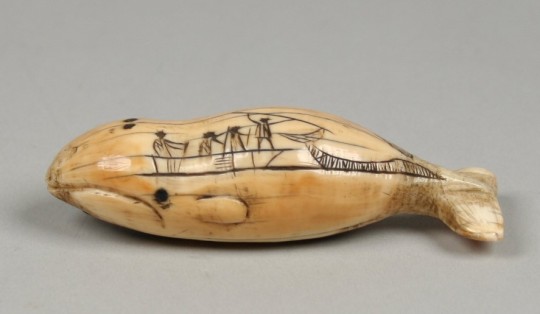
Whale, Inuit, 1830–60
Walrus Ivory, H. ⅞ x W. 1 x D. 2 ⅞ inches
342 notes
·
View notes
Text
Charles Dickens in hell when he found out the HMS Terror & Erebus & crew were exactly where the Inuit said they were & that they were a actually reliable source of information

52 notes
·
View notes
Text
Bill Mackowski has a collection of over 200 pairs of snowshoes. He’s travelled all over the world to learn the history and craftmanship behind his unique choice of footwear.
127 notes
·
View notes
Text

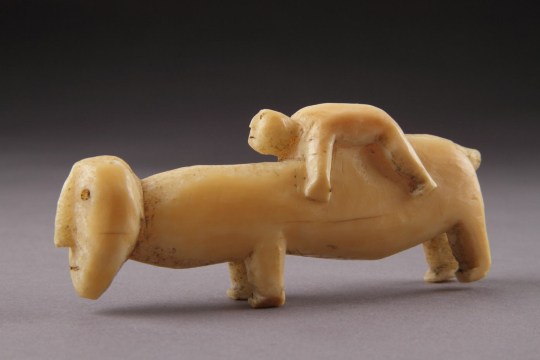

"Bering Sea Eskimo Inuit Carved Walrus Ivory Anthropomorphic Figure of a Polar Bear with its Cub,"
A Bering Sea Eskimo Inuit Carved Walrus Ivory Anthropomorphic Figure of a Polar Bear with its Cub, probably Amuletic. Early 19th Century,
3.5cm high, 9.5cm long, 2.5cm wide (1½ ins high, 3¾ ins long, 1 ins wide).
Courtesy: Finch & Co.
#art#history#design#style#archeology#sculpture#bering sea#inuit#carved#ivory#anthropomorphic#figure#bear#cub#eskimo#amulet#finch&Co
100 notes
·
View notes
Text
Armfish is really tiny in real life!
In a July 1845 letter to John Barrow, Fitzjames drew himself capsized. He had taken his trousers off in order to fit inside the small Inuit canoe, and paddled about until over he went. Magical water creatures came to his rescue.
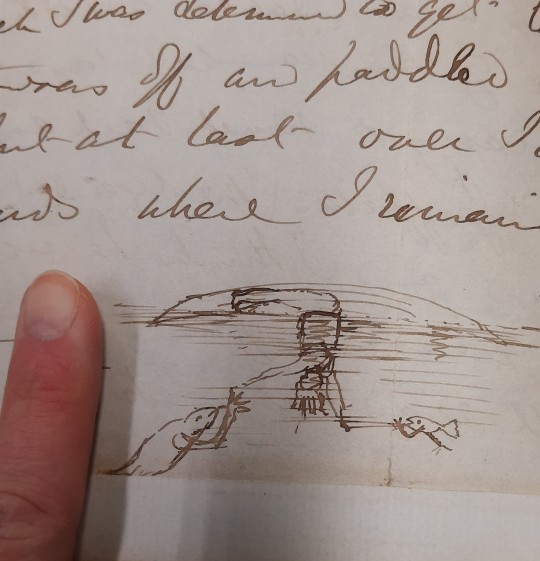
#james fitzjames#royal navy#franklin expedition#the terror#naval history#inuit#kayaking#armfish#doodles
230 notes
·
View notes
Photo
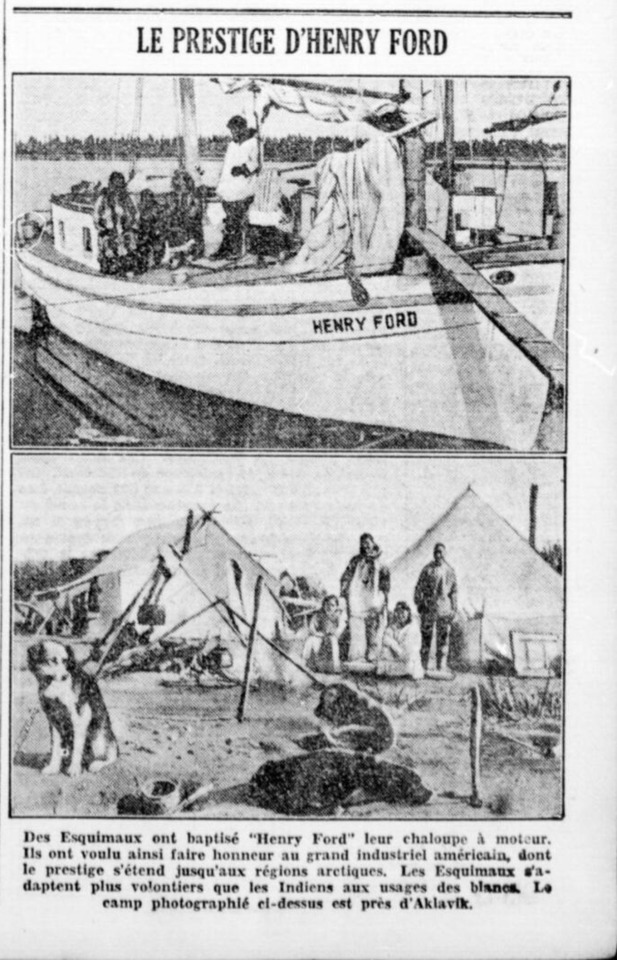
“Le Prestige d’Henry Ford,” Le Petit Journal (Montreal). November 13, 1932. Page 17.
---
Des Esquimaux ont baptisé "Henry Ford” leur chaloupe à moteur. Ils ont voulu ainsi faire honneur au grand industriel américain, dont le prestige s'étend jusqu'aux régions arctiques. Les Esquimaux s’adaptent plus volontiers que les Indiens aux usages des blancs. Le camp photographié ci-dessus est près d'Aklavik.
[AL: A rather obious paen to colonialism and the ‘assimilation’ of Inuit, using the old, inaccurate and offensive name.]
#aklavik#inuvik#northwest territories#inuit#inuit history#motor boat#arctic canada#inuuk#indigenous people#indigenous history#anti-indigenous racism#assimilationism#settler colonialism in canada#henry ford#great depression in canada
2 notes
·
View notes
Text
The enduring influence of Sequoyah, Cherokee polymath
The Cherokee syllabary was created by Sequoyah, a polymath who didn’t know how to write, but saw English writing and copied the concept to create his own writing system for Cherokee:
Sequoyah’s syllabary later influenced the creation of the Cree syllabary also:
The Cree syllabary in turn was used as the starting point for the Inuit syllabary:
So Sequoyah’s extraordinary influence thrives in communities all across North America today:
#Cherokee#Cree#Inuit#writing#history#language#linguistics#Native#Indigenous#Native American#lingblr#langblr#Sequoyah
105 notes
·
View notes
Text
not your founding father (mouthpiece)
My thoughts on Louis Riel being named first premier of Manitoba.
Taanshi kiyawow, Riel dishinikashoon. I descend maternally from seven Métis families from the historic Red River Settlement in Manitoba and Batoche, Saskatchewan. Notably, my Berthelett ancestors worked for the North West Company and were community leaders in the Métis settlement of Pointe a Grouette before it was systemically overtaken by French settlers who claim we formed no roots in the area (St. Onge). My Caron ancestors from Batoche fought in the North West Resistance alongside Louis Riel and Gabriel Dumont. My fifth-great-uncle Jean Caron Sr. fought alongside his sons at the age of 52; his house still stands in Batoche to this day, where thousands of Métis make pilgrimages every year to remember the events of 1885.
What do you know about Louis Riel?
I can only read his words and imagine what guidance he would have provided had he lived longer than 41 years. Or imagine myself in his place as he walked to the gallows on November 16th, 1885. As a child when I visited Manitoba my grandpa and my kokum would take me to visit his grave, just as they did with my mother, who named me ‘Riel’.
We are inextricably linked through time and across our homelands. What’s in a name? Unasked for? Not yet earned? I do not yet know who I am to my people but I carry an important name and the trickster’s spirit, and with these comes the responsibility of understanding and revealing cultural and societal truths (Stimson).
I am still growing into my name
Today I am a mouthpiece
An interpreter of the past
What do you know about the trial of Louis Riel?
July 31st, 1885, Riel gives his final speech. Historical weather data shows that it was a hot day in Regina. Cooler than the days before but still hot with the swelter of the plains. He spoke long, in English, not the language of his birth.
“The day of my birth I was helpless and my mother took care of me although she was not able to do it alone; there was someone to help her to take care of me and I lived. Today, although a man, I am as helpless before this court, in the Dominion of Canada and in this world, as I was helpless on the knees of my mother the day of my birth. The Northwest is also my mother; it is my mother country and although my mother country is sick and confirmed in a certain way, there are some from Lower Canada who came to help her to take care of me during her sickness and I am sure that my mother country will not kill me more than my mother did forty years ago when I came into the world, because a mother is always a mother, and even if I have my faults, if she can see I am true, she will be full of love for me.”
“When I came into the Northwest in July, the 1st of July 1884, I found the Indians suffering. I found the half-breeds eating the rotten pork of the Hudson Bay Company and getting sick and weak every day. Although a half-breed, and having no pretension to help the whites, I also paid attention to them. [...] We have made petitions, I have made petitions with others to the Canadian government asking to relieve the condition of this country.”
“We have taken time; we have tried to unite all classes, even may speak, all parties.”
“During my life I have aimed at practical results. I have writings, and after my death I hope that my spirit will bring practical results.”
“When we sent petitions to the Government, they used to answer us by sending police [...] There are papers which the Crown has in its hands, and which show that demoralisation exists among the police, if you will allow me to say it in the court, as I have said it in writing.”
“If I am blessed without measure I can see something into the future, we all see into the future more or less.”
“The only things I would like to call your attention to before you retire to deliberate are:
1st That the House of Commons, Senate and Ministers of the Dominion, and who make laws for this land and govern it, are no representation whatever of the people of the North-West.
2nd That the North-West Council generated by the Federal Government has the great defect of its parent.
3rd The number of members elected for the Council by the people make it only a sham representative legislature and no representative government at all.”
“I have never had any pay. It has always been my hope to have a fair living one day. It will be for you to pronounce - if you say I was right, you can conscientiously acquit me, as I hope through the help of God you will. You will console those who have been fifteen years around me only partaking in my sufferings. What you will do in justice to me, in justice to my family, in justice to my friends, in justice to the North-West, will be rendered a hundred times to you in this world, and to use a sacred expression, life everlasting in the other.”
What do you know about Louis Riel?
I have done this walk in my mind so many times that I have lost count. Historical accounts of the day note that it was a chill, clear, autumn morning. The prairies stretched out, silver frost bathed in sunlight. He faced it all and was brave until the end. Despite reports of it being destroyed, former premier of Manitoba Duff Roblin and his family, and the RCMP gloat over the supposed fragments of the rope that hanged the traitor, and I wonder how long the rope would be if you lined up every single scrap of twine rumoured to be the noose that killed Riel?
Does it make you feel less guilty to call him a founding father? Canadians are only able to remember him through his murder and not through his words that can still animate his presence. Written words and objects once owned are ghosts, extensions of our bodies and spirits. When I read his letters and journals I see the urgency in his penmanship, and I think about the sweat and invisible oils of his skin becoming a part of each page as he wrote and wrote and wrote. I wonder where each journal travelled with him during his exile, and why he chose each book. There is one with an illustration of a guardian angel watching over two children, and I wonder if he thought of himself as one of them being shepherded through life by his ancestors.
Canadians argue about whether or not Riel should have been hanged instead of talking about what he had believed and said and accomplished, and what he wanted to do with the rest of his life had it not been cut short.
No one talks about his dreams or his fears, and he did not live long enough to answer the question of if he would have wanted to be revered as the first premier of Manitoba. Or, in response would he ask for clean water for all, to stop the sweeps, and starlight tours? Would he ask for the Winnipeg police to search the landfills for our murdered women instead of brutalizing and killing us? Would he call for an end to all colonialism and genocide? Or would he simply ask for a place to smudge and be in peace for a while?
When we send petitions to the government they still answer us by sending the police, before turning around and calling Louis Riel a founding father (Riel).
Canada cannot answer these questions for him by giving him that title posthumously, only sit with the discomfort of blood-soaked hands, and wonder how different things would have been had that sacred fire not been snuffed out in 1885.
I cannot answer these questions for him either
And I am still growing into our name.
Works Cited
Riel, Louis. Excerpts from his final statement in court on trial, July 31st, 1885
Stimson, Adrian, “Buffalo Boy: Then and Now.” Fuse Magazine, vol. 32, no. 2, 2009, pp. 18-25.
St-Onge, Nicole J.M. “The Dissolution of a Métis Community: Pointe à Grouette, 1860–1885.” Studies in Political Economy 18.1 (1985): 149–172. Web.
#all love to wab kinew but like....mr riel just wants community food and housing and to not get murdered and also our land rights back#like he just wanted us to live our little métis lives in peace and he hated the canadian government#my work#this was part of a performance but i would just like to post the text#native#métis#louis riel#politics#canadian politics#canadian history#métis history#first nations history#fnmi#mmiw#first nations métis inuit#missing and murdered indigenous women and girls#mmiwg2s#colonialism#canadian colonialsm#land back#history#poetry#personal writing#indian#ndn#american indian movement#north west resistence#red river residence
23 notes
·
View notes